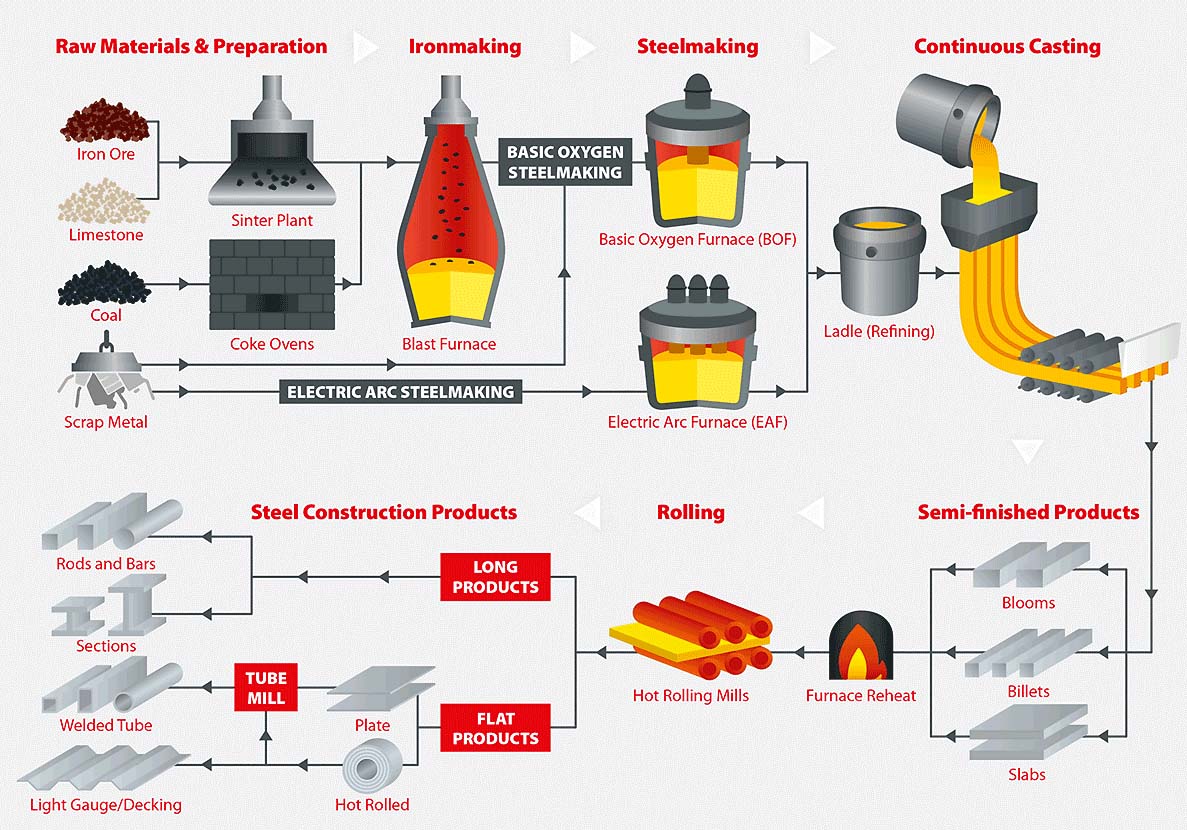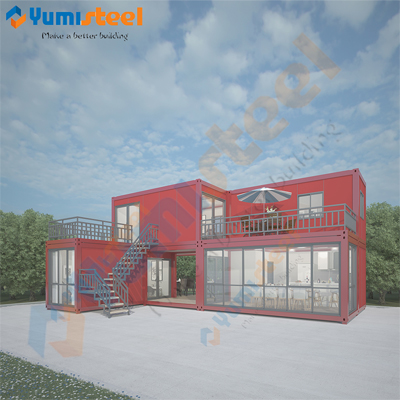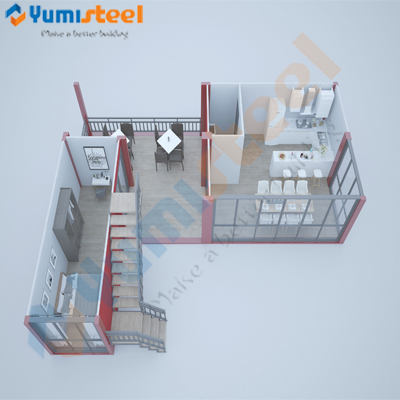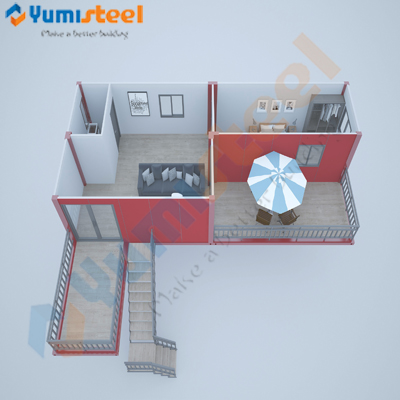1.Raw materials for steel
|
Ferrocarbon alloy is a binary alloy with iron and carbon. A class of —— carbon steel and cast iron, the most used in iron-based materials,is an industrial iron-carbon alloy material. The reason for the wide range of application of steel materials is the large span of available components, from carbon-free industrial pure iron to cast iron with carbon 4%, the phase structure and microstructure of the alloy and a variety of heat processing processes, especially metal heat treatment technology, greatly change the organization and performance of a component alloy. |
|
2.Smelting Process
Raw materials & preparation →Iron making→Steel making→Continuous Casting→Semi-finished products→Rolling→Steel construction products

3.Application for steel products
Steel is one of the most widely used materials for construction in the world.Steel is also the most recycled material as well. Steel in its different alloys and forms can offer you different properties that can meet a variety of your needs.
Transportation
Wrought steels that are used in industries such as engineering are designed to meet certain, specific levels of strength and corrosion resistance.
Steel is ideal for construction material for vehicles because it is lightweight and requires less energy to fabricate which reduces carbon dioxide emissions. Different kinds of steel are used for different part of the vehicle such as the body, doors, steering, wheel axles, interior, suspension, gearbox, and engine.
Steel is also the ideal material for marine applications because of the fact that it can resist rust better than other common shipbuilding metals such as bronze, galvanized steel, or brass. Chemical tankers often represent the largest applications of steel because these need a material that is easily fabricated, capable of being cleaned thoroughly when changing cargo, strong, and extremely durable.
Construction
In the construction industry, a sustainable material such as steel allows structures to be built quickly at a low price. Because steel comes in various alloys and forms, it can be designed to meet the demands of every project.
Steel can even be surface-treated or alloyed differently for protection against the elements. These properties of steel allow it to be incorporated into the infrastructure of a building in almost any kind of environment.
Today, steel is one of the most important components of the construction industry, accounting for more than fifty percent of the production of steel in the world. From houses to car-parks, to schools and skyscrapers, most buildings all rely on their strength and durability.
Steel has a wide range of applications across different industries such as transport, construction, and packaging.
Thanks to its properties like high durability, corrosion resistance, strength, and low cost, it is the material that is most preferred by contractors, engineers, architects, and fabricators.
This makes life easier and more convenient, not just for the builders, but the people that will live in these buildings too.

|
 |
 |
years of experience
 online service
online service +86-592-6095031
+86-592-6095031 manager@yumisteel.com
manager@yumisteel.com Alina_Yuki
Alina_Yuki +8613559086380
+8613559086380 +8615860744964
+8615860744964